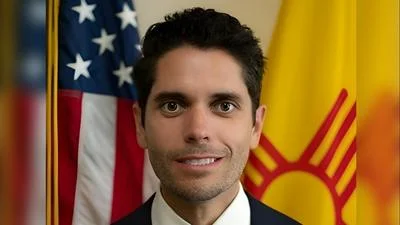RICHLAND, Wash. - Virtual reality (VR) is becoming more real and less virtual at one of EM’s Office of River Protection contractors.
The computer-generated technology that immerses users in a simulated environment made its debut at Washington River Protection Solutions (WRPS), the Hanford tank operations contractor, as part of a training session late last year.
“We’re doing a lot of things with the VR technology," said Lloyd Keith, the WRPS Human Performance Improvement manager. “It’s an opportunity to enhance familiarity with P&IDs (piping and instrumentation diagrams), looking at a real system and, at the same time, explore the possibilities of the software to use in the field…to maybe save having to do entrances, save dose, save exposure."
Participants in the training session used a VR headset in an exercise that involved finding a problem hidden somewhere within a maze of piping physically located several miles away from the training location.
Simple head and eye movements allowed the trainees to move visually through the piping setup as if they were walking through the facility. By focusing on specific icons placed within the 3-D image, users could jump to a different location or “pop up" additional detail, like a piping system drawing.
“Everything is just like you’re there," Keith said, referring to the images participants were viewing. “We can send one person in (to a work area), take some pictures…and you can weave them together to make this 3-D environment that then any number of people can use."
The interactive images can be saved and posted on an intranet website for viewing without a VR headset.
First-time user Lee McGregor found it quite realistic.
“When you’re sitting in the chair, it’s almost like you’re there. You almost want to start walking," he said. McGregor was one of nine trainees, comprised of craft workers, managers, and a safety representative.
Keith added, “We’re always trying to keep the training activities fresh and trying to keep new things coming in for people to use to learn in different ways. Everybody learns differently. These activities are really about making you feel, because if you feel, you will never forget."
Source: U.S. Dept. of Energy, Office of Environmental Management








